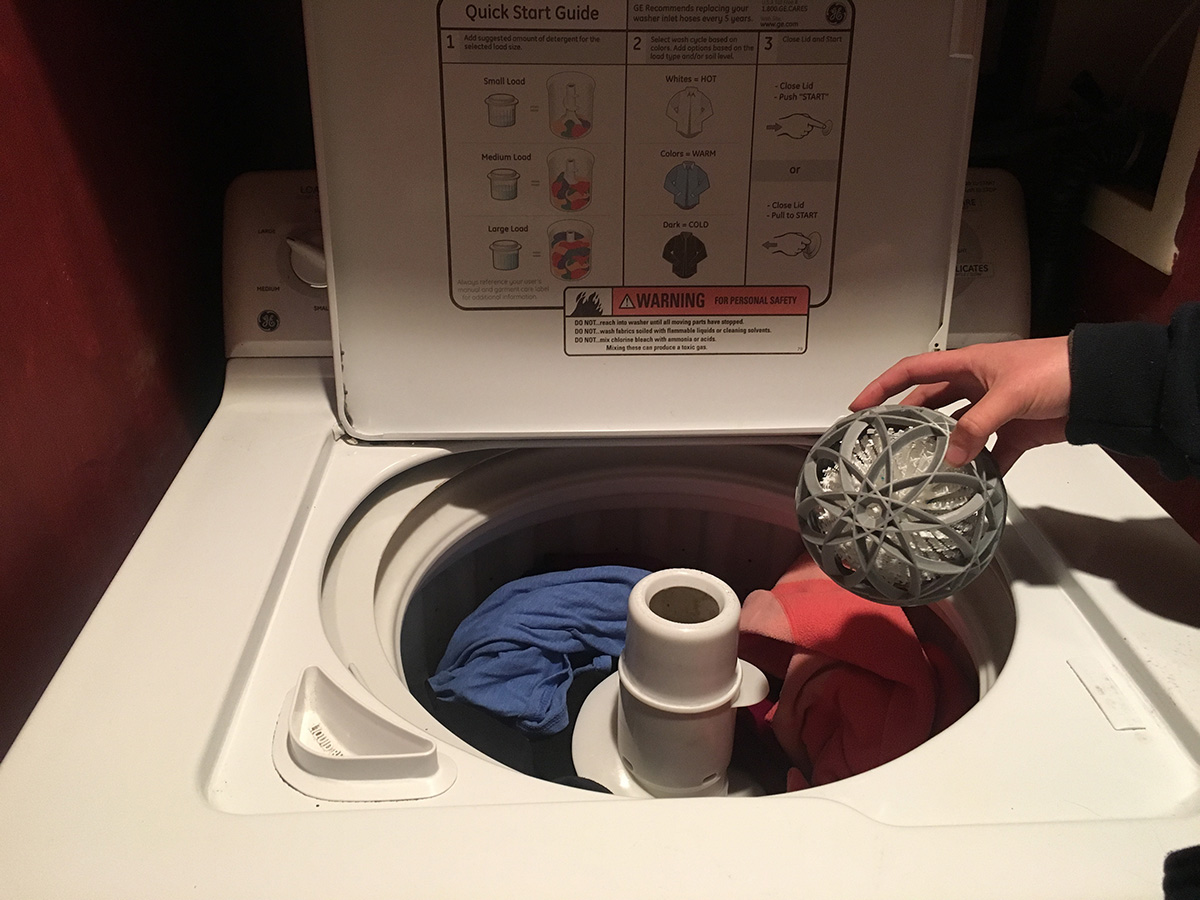The Rozalia Project Wants You to Stop Polluting the Ocean

The Rozalia Project’s microfiber catcher/Photo provided
Whether you know it or not, you’re polluting the ocean.
Each time you wash clothes made with synthetic materials—think polyester, rayon, nylon, and the like—as many as 1,900 tiny microfibers break off, flow through your washing machine drain, and continue on to waterways. Once in the water, they’re ingested by all forms of marine life, threatening both their health and yours. Consider this: In a 2015 study, 67 percent of species purchased from a California fish market were found to contain microfibers, meaning there’s a very real chance that plastic is ending up on your plate.
There’s not conclusive data about what, exactly, microfibers do to human health, but Rachael Miller, cofounder of the New England-based ocean conservation group Rozalia Project, says it’s safe to assume they’re not a desirable part of your seafood spread.
“I don’t want to eat my fleece, and I don’t want to eat your fleece, and my guess is you don’t want to eat the guy down the hall’s fleece, either,” she says. “Whatever the consequences are to humans, none of us are willingly eating synthetic anything.”
To prevent you from eating your fleece, and the fleeces of thousands of strangers, Miller and Rozalia Project are working to curtail microfiber pollution, a problem that has only come to light as water testing methods have grown more sophisticated in recent years. But, lucky for athleisure addicts, Miller says outlawing synthetics isn’t what Rozalia Project is about. “A little synthetic in your yoga pants helps,” she laughs. “Let’s not pretend it doesn’t!”
Instead, the group is developing what Miller says is the market’s first microfiber catcher, a small sphere that you’d throw in the washing machine just as you would a dryer ball. The design, Miller says, is modeled after creatures like sea anemones, which allow water to pass through them while catching tiny plankton.
“It will cruise around your washing machine and collect synthetic microfibers, and as a kind of awesome added bonus, it seems to be collecting hair pretty effectively as well,” Miller says. “It’s doing double work.”
The product will ideally go on sale next spring, and Miller guesses it will cost between $20 and $25. Roughly every six to eight weeks, users will send their filled catcher—which Miller says will resemble a “sort of colorful hairball”—back to Rozalia Project, which will safely dispose of the microfibers and send a new catcher back.
“This is a problem that we’re all part of, everyone who wears clothes and then washes them,” Miller says. “There’s no reason to feel bad about that. We didn’t know this was happening. But now we know, so we feel that we’re providing an opportunity to be part of the solution—and an easy way.”
As for what you can do until the product comes to market, Miller says it’s a pretty simple solution. “We recommend washing your clothes only when they really need it,” she says. “That’s really the best we can do right now.”


